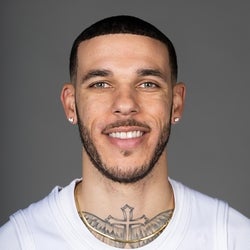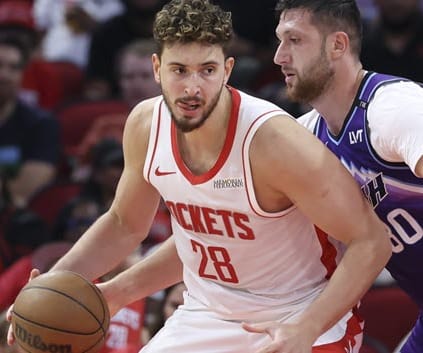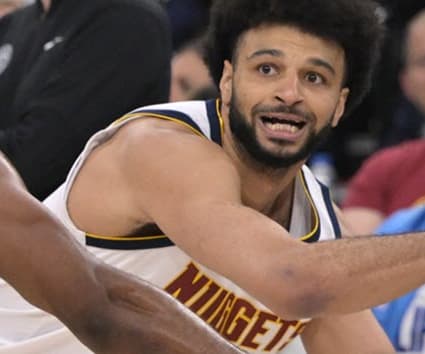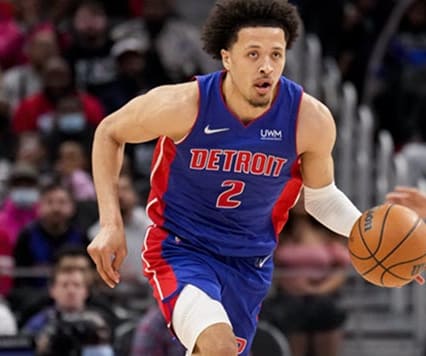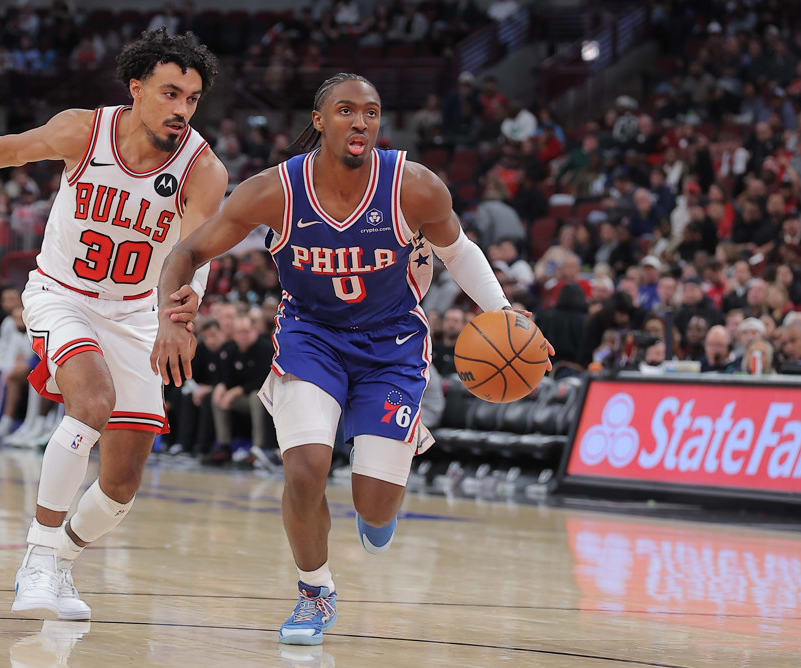2025 Stats
PTS
5.6
REB
4.6
AST
4.8
STL
1.5
BLK
0.3
ROS Projections
2025 Fantasy Outlook
When healthy, Ball can be a game-changing guard who possesses a respectable three-point shot and elite passing skills. However, staying healthy has been his biggest issue for most of his career. The floor general returned to game action in the 2024-25 season after being sidelined during the 2022-23 and 2023-24 campaigns. However, he was limited to only 35 regular-season outings while averaging 7.6 points, 3.4 rebounds, 3.3 assists and 1.3 steals across 22.2 minutes per game. He missed Chicago's final 22 regular-season games due to a sprained right wrist, and while he's expected to have a normal offseason ahead of the 2025-26 season, it's hard to trust him to play the entire campaign with no limitations. He was traded to the Cavaliers in the offseason, but with Darius Garland and Donovan Mitchell entrenched as the backcourt starters in Cleveland, Ball will be limited to a bench role with the Cavs. Even if that role comes with some upside due to the Cavaliers' potent offense, the ceiling of being strictly a bench option could limit Ball's fantasy upside considerably. When factoring in that scenario with his persistent injury issues, his fantasy value for 2025-26 should be limited. Fantasy managers would be wise to look at better options in standard drafts, though Ball might have some value as a streaming alternative or a backup guard in deeper leagues. He could also carry some upside in category-based leagues as a source of assists, rebounds, steals and possibly three-pointers if his shooting goes back to his career norms. Read Past Outlooks
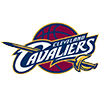
Good to go for Friday
Ball (knee/rest) isn't on the injury report ahead of Friday's game against the Wizards.
ANALYSIS
Ball sat out of the second leg of a back-to-back Saturday but will be ready to roll for Friday's clash. He's averaging 3.2 points, 6.4 rebounds, 4.6 assists and 1.4 steals over his last five appearances.
Ball sat out of the second leg of a back-to-back Saturday but will be ready to roll for Friday's clash. He's averaging 3.2 points, 6.4 rebounds, 4.6 assists and 1.4 steals over his last five appearances.
NBA Per Game Stats
Per Game
Total
Per 36
NBA Per Game Stats
Loading Per Game Stats...
2025 NBA Game Log
2025
2024
2021
2020
2019
2018
2017
2025 NBA Per Game Split Stats
Schedule
By Month
Starting/Off Bench
Days Rest
Vs Opp
By Result
2025 NBA Per Game Split Stats
Loading Split Stats...
Advanced Stats
Loading Advanced Stats...
Stat Review
2025
2024
2021
2020
2019
2018
2017
How does Lonzo Ball compare to other players?
This section compares his stats with all players from the previous three seasons (minimum 200 minutes played)*. The bar represents the player's percentile rank. For example, if the bar is halfway across, then the player falls into the 50th percentile for that stat and it would be considered average.
True Shooting %
41.8%
Effective Field Goal %
39.8%
3-Point Attempt Rate
81.9%
Free Throw Rate
12.6%
Offensive Rebound %
4.3%
Defensive Rebound %
16.4%
Total Rebound %
10.2%
Assist %
24.9%
Steal %
2.5%
Block %
1.2%
Turnover %
13.2%
Usage %
14.5%
Fantasy Points Per Game
21.7
Fantasy Points Per Minute
0.9
NBA Historical Fantasy Stats
Historical ADP
Loading Historical ADP...
Cavaliers Depth Chart
Our full team depth charts are reserved for RotoWire subscribers.
Subscribe Now
Cavaliers Rotation: Minutes Breakdown
Loading Cavaliers Rotation Data...
Average Fantasy Points
Minutes
FanDuel
DraftKings
Yahoo
FantasyDraft
Head2Head
Sorare
Average Fantasy Points are determined when Lonzo Ball was active vs. non-active during the season. Click here to view average fantasy points for a different time period.
Loading Average Minutes...
Past Fantasy Outlooks
2024
2022
2021
2020
2019
2018
2017
After missing the previous two years due to ongoing knee injuries, Ball appears to be on the cusp of returning to the NBA. Having last played in January of 2022, Ball will attempt to get back on the court after missing almost three years of basketball. While this is great news for Ball, the Bulls are likely to take extra caution when allocating his minutes. There is almost no way he plays both halves of back-to-back sets, and his playing time could be in the low teens for the majority of the season. Before his injury, Ball was playing some of the best basketball of his career, providing Chicago with an elite on-ball defensive option while operating as the primary floor general. However, a lot has changed since he last played, with the Bulls now on a different trajectory. They acquired Josh Giddey during the offseason, while both Coby White and Ayo Dosunmu have developed to the point where they require meaningful minutes on a nightly basis. Taking into consideration the severity of the injury, there is almost no way Ball warrants any attention outside of very deep leagues.
More Fantasy News

Out Saturday
Ball (knee/rest) has been ruled out for Saturday's game against the Warriors.
ANALYSIS
Subscribe now to instantly reveal our take on this news.
Subscribe now to instantly reveal our take on this news.

Good to go
Ball (illness) is available for Wednesday's game against Portland, Spencer Davies of SI.com reports.
ANALYSIS
Subscribe now to instantly reveal our take on this news.
Subscribe now to instantly reveal our take on this news.

Probable for Wednesday
Ball (illness) is listed as probable for Wednesday's game against the Trail Blazers.
ANALYSIS
Subscribe now to instantly reveal our take on this news.
Subscribe now to instantly reveal our take on this news.

Out with illness
Ball (illness) is out for Monday's game against the Pacers.
ANALYSIS
Subscribe now to instantly reveal our take on this news.
Subscribe now to instantly reveal our take on this news.

Ruled out for Sunday
Ball (knee) has been ruled out for Sunday's game against the Celtics.
ANALYSIS
Subscribe now to instantly reveal our take on this news.
Subscribe now to instantly reveal our take on this news.
Latest Fantasy Rumors

Atkinson raves about him
Cavaliers coach Kenny Atkinson raved about Ball's performance in Tuesday's preseason game against the Pistons, Chris Fedor of cleveland.com reports.
ANALYSIS
"He hasn't disappointed," Atkinson said. "Everything that we thought we were getting, we're getting. He's just got a great, great feel. I'm excited to coach any NBA player, but this is a guy I've watched for a long time. He's kind of the ultimate system fit." Ball had nine points, nine assists, four rebounds, three blocks and two steals in just 20 minutes. He'll be restricted to about that same workload when the regular season opens, and he's not expected to play in both games of back-to-back sets. Despite his obvious stat-stuffing upside, the restrictions will keep his fantasy value in check.
"He hasn't disappointed," Atkinson said. "Everything that we thought we were getting, we're getting. He's just got a great, great feel. I'm excited to coach any NBA player, but this is a guy I've watched for a long time. He's kind of the ultimate system fit." Ball had nine points, nine assists, four rebounds, three blocks and two steals in just 20 minutes. He'll be restricted to about that same workload when the regular season opens, and he's not expected to play in both games of back-to-back sets. Despite his obvious stat-stuffing upside, the restrictions will keep his fantasy value in check.


